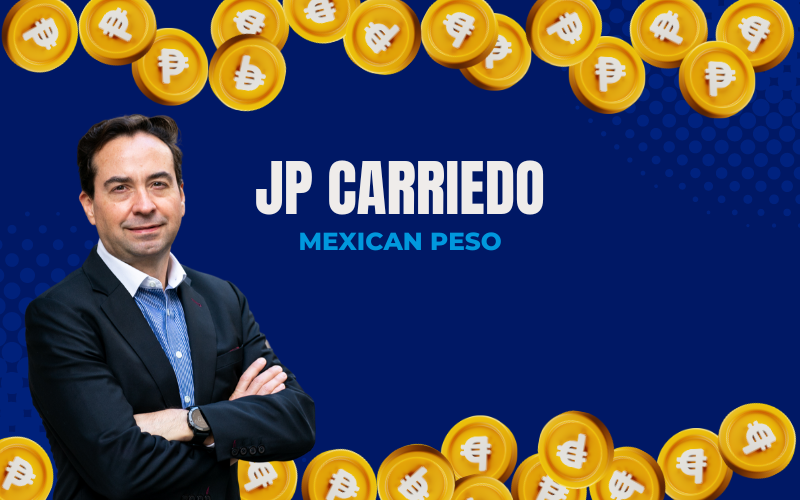How a Rewired Global Trade Order Is Reshaping FX, Growth, and Corporate Risk

From Globalization’s Promise to Growing Skepticism
Ever since the turn of the century, consumers around the globe have enjoyed a world with plenty of commercial options and access. Globalization, the force behind making countries more dependent on each other, brought along a period of tremendous efficiency and built a network of manufacturers and service providers that transcended national geography and resource limitations.
Going back to the origins of international trade, Ricardian theory posits that it is best for countries to work with one another, focus and specialize on what they can produce best, and trade accordingly to make for a wealthier society. However, the benefits of such a system are now being more scrutinized than ever, with political power battles now embedded with challenges to the status quo.
Tariffs as a Policy Tool
Some proponents have suggested the entire enterprise has been a mistake, and vast inequality is evidence that policies need to provide fixes. Historically, tariffs have been one way to take a step back from facilitating trade, with the intention of protecting and closely managing developments for industries.
Today, tariffs have been imposed in large part to decouple the United States from China, particularly when it comes to technology and the advancement of sophisticated semiconductors which can be crucial to the safety and protection of national security. As the current U.S. administration sees it, it is highly risky to rely on and coordinate with China’s tech firms, as these are trying to dominate the global arena.
More importantly, there is a push to do more locally and rely less on anything made by countries that aren’t aligned with U.S. interests.
In a new method of negotiating better trade terms and making concessions involving political goals, the U.S. is using tariffs. They are alternatives to financial sanctions, used temporarily and tied to deadlines that can be delayed.
Global Ripple Effects
While it confuses markets, the idiosyncrasy of tariffs have created opportunities for other nations. Many countries have desired better terms with the U.S. for a long time–or to be perceived as acceptable substitutes to China for critical energy sources and low-cost manufacturing. Since the U.S-Dollar centered system has been shaken, the instability of the Buck has made for opportunities in the Emerging-Market currency pairs and given muti-year highs to majors. The Euro, for example, has hit its best point in four years.
A Weaker Dollar
The Dollar Index (DXY) suffered a terrible first half of the year, showing the weakest 6-month period since the trackers’ invention in 1973. Tariffs are not typically perceived as an instrument that fosters growth, but rather as a “tax” that can break the business equation for several firms. This led to a loss in economic momentum that registered a contraction in Q1 of half a percent and has slowed down 2025’s average economic growth from 2.5% in 2024 to 1.25% now. The latter figure was achieved thanks to a 3.0% reading in Q2.
Rising FX Complexity
Since the Buck has proven vulnerable to deep losses, vendors in other nations that had never asked to be paid in their local tender are now demanding a way to receive payment in something other than just USDs.
This has in turn made companies more conscientious of their Net-Landed cost, the total cost of delivery that includes charges in duties, shipping, as well as conversions.
More than ever, we have seen companies plan ahead with Forward Instruments, contracts that can safeguard a price for a period down the line and be hedged until maturity when a fixing settles the total balance.
These instruments are for non-Majors such as Indian Rupee (INR), Philippine Peso (PHP), Brazilian Real (BRL), Colombian Peso (COP), and even frontier currencies such as Vietnamese Dong (VND). As far as the ability to foresee where things are going, there are geopolitical concerns, especially about the escalation of armed conflicts in the Middle East and the intense war of Russia and Ukraine.
Following FX flows will demand more out of participants, who will have to be specific about their area or region of interest. Tariffs will have blanket effects as well as unique consequences to certain partnerships.
Trade Deals in Flux
We have already witnessed trade agreements between the U.S. and the EU as well as Japan be accepted, but the details of the terms remain a point of contest within the policymakers of these economies.
While Mexico and Canada try to remain friendly with the U.S., the United States–Mexico–Canada Agreement (USMCA) is likely to be scrutinized and perhaps there will be calls for changes. Since the guidance has been blurry, forecasting long-term has become very difficult.
The Central Banks’ Role
We must also take into account that central bank policy decisions may no longer cause the same effect as before, something we have witnessed in 2025. The first half of the year did not result in currency value losses for the Euro (EUR) nor Mexican Peso (MXN) after the European Central Bank and Bank of Mexico (Banxico) both exercised rounds of loosening by cutting interest rates.
Following the Fed’s announcement on September 17th, there were no promises of lowering borrowing costs regardless of the pains in “stagflation,” a phenomenon where economic growth is hard to find while prices remain stubbornly upwardly trending. The event resulted in a “hawkish cut,” meaning that the Fed slashed as expected, but sounded too confident to assume they will be stimulus-driven going forward as well as worried about inflation being elevated. It leaves the narrative for the Dollar still quite mixed.
Navigating Volatility: Managing Risk and Keeping Commerce Moving
Because nothing has been consistent, volatility has made us pivotal in helping clients adjust rapidly and intake information that matters while separating from what is just noise.
Turbulent times, or times of change, may bring with them a sense of desperation and perhaps impotence, but we have the ability to use good banking relationships to minimize risk and more importantly, make sure that payments and business flow smoothly. We are prepared to take on the commercial impact.
Ultimately, we are a bridge connecting all out there, that has solid foundations and has handled the weight of consequences well even after the pandemic shocks. Expect American relations to play a major role going forward as well as the need to understand the sustainability of BRICS as a long-term adversary for leverage. Remember, the ugly part about tariffs is that they come with retaliation.






